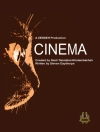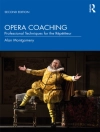Scott Curtis draws our eye to the role of scientific, medical, educational, and aesthetic observation in shaping modern spectatorship. Focusing on the nontheatrical use of motion picture technology in Germany between the 1890s and World War I, he follows researchers, teachers, and intellectuals as they negotiated the fascinating, at times fraught relationship between technology, discipline, and expert vision. As these specialists struggled to come to terms with motion pictures, they advanced new ideas of mass spectatorship that continue to affect the way we make and experience film. Staging a brilliant collision between the moving image and scientific or medical observation, visual instruction, and aesthetic contemplation,
The Shape of Spectatorship showcases early cinema’s revolutionary impact on society and culture and the challenges the new medium placed on ways of seeing and learning.
表中的内容
List of Illustrations
Acknowledgments
Introduction
1. Science’s Cinematic Method: Motion Pictures and Scientific Research
2. Between Observation and Spectatorship: Medicine, Movies, and Mass Culture
3. The Taste of a Nation: Educating the Senses and Sensibilities of Film Spectators
4. The Problem with Passivity: Aesthetic Contemplation and Film Spectatorship
Conclusion: Toward a Tactile Historiography
Notes
Bibliography
Index
关于作者
Scott Curtis is associate professor in the Department of Radio/Television/Film at Northwestern University, director of the Communication Program at Northwestern University in Qatar, and president of Domitor, the international society for the study of early cinema.












